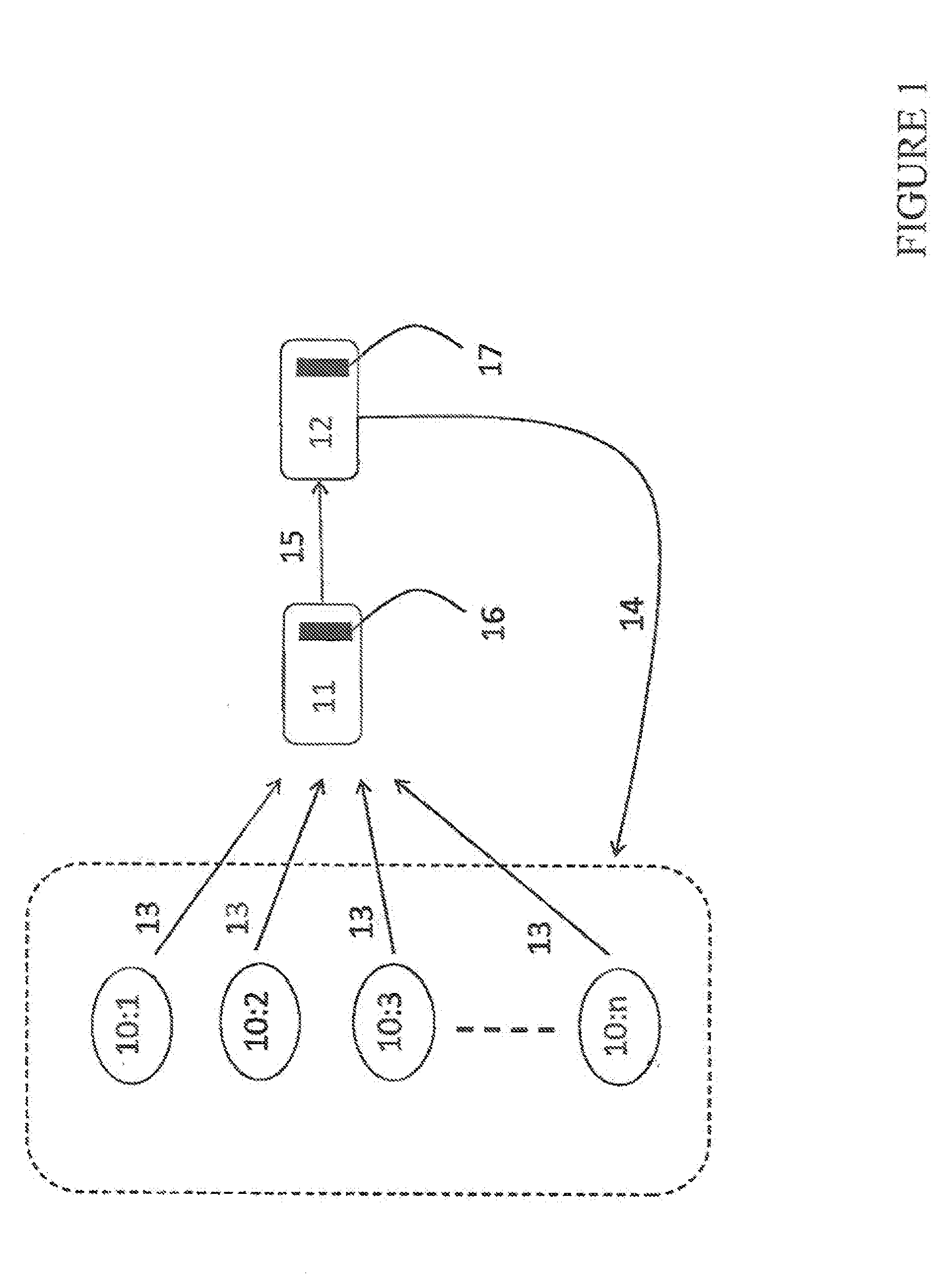P2p-engine
a technology of p2p engine and overlay configuration, applied in the field of p2p engine, can solve problems such as poor overlay configuration, and achieve the effect of enhancing the overall system performan
- Summary
- Abstract
- Description
- Claims
- Application Information
AI Technical Summary
Benefits of technology
Problems solved by technology
Method used
Image
Examples
Embodiment Construction
High-Level Architecture
[0023]FIG. 1 shows a prior art P2P system in the form of a plurality of peers 10:1, 10:2, 10:3, . . . , 10:n and a so called tracker 11 with which the peers communicate. Further, FIG. 1 shows a connectivity engine 12 in accordance with the present invention, which is connected to the tracker and the peers. FIG. 1 is by means of illustration only: the engine could functionally be part of the tracker and from hardware point of view be located in the same functional block. Both the tracker and the engine are typically devices with computing facilities embodied in the form of processors 16, 17, Thus, the tracker and the engine are typically implemented as computers executing appropriate software stored in associated memory for procuring required functionality. However, other suitable devices with computing capabilities could be used, e.g. an application specific integrated circuit (ASIC), a field programmable gate array (FPGA), a complex programmable logic device ...
PUM
 Login to View More
Login to View More Abstract
Description
Claims
Application Information
 Login to View More
Login to View More - R&D
- Intellectual Property
- Life Sciences
- Materials
- Tech Scout
- Unparalleled Data Quality
- Higher Quality Content
- 60% Fewer Hallucinations
Browse by: Latest US Patents, China's latest patents, Technical Efficacy Thesaurus, Application Domain, Technology Topic, Popular Technical Reports.
© 2025 PatSnap. All rights reserved.Legal|Privacy policy|Modern Slavery Act Transparency Statement|Sitemap|About US| Contact US: help@patsnap.com



